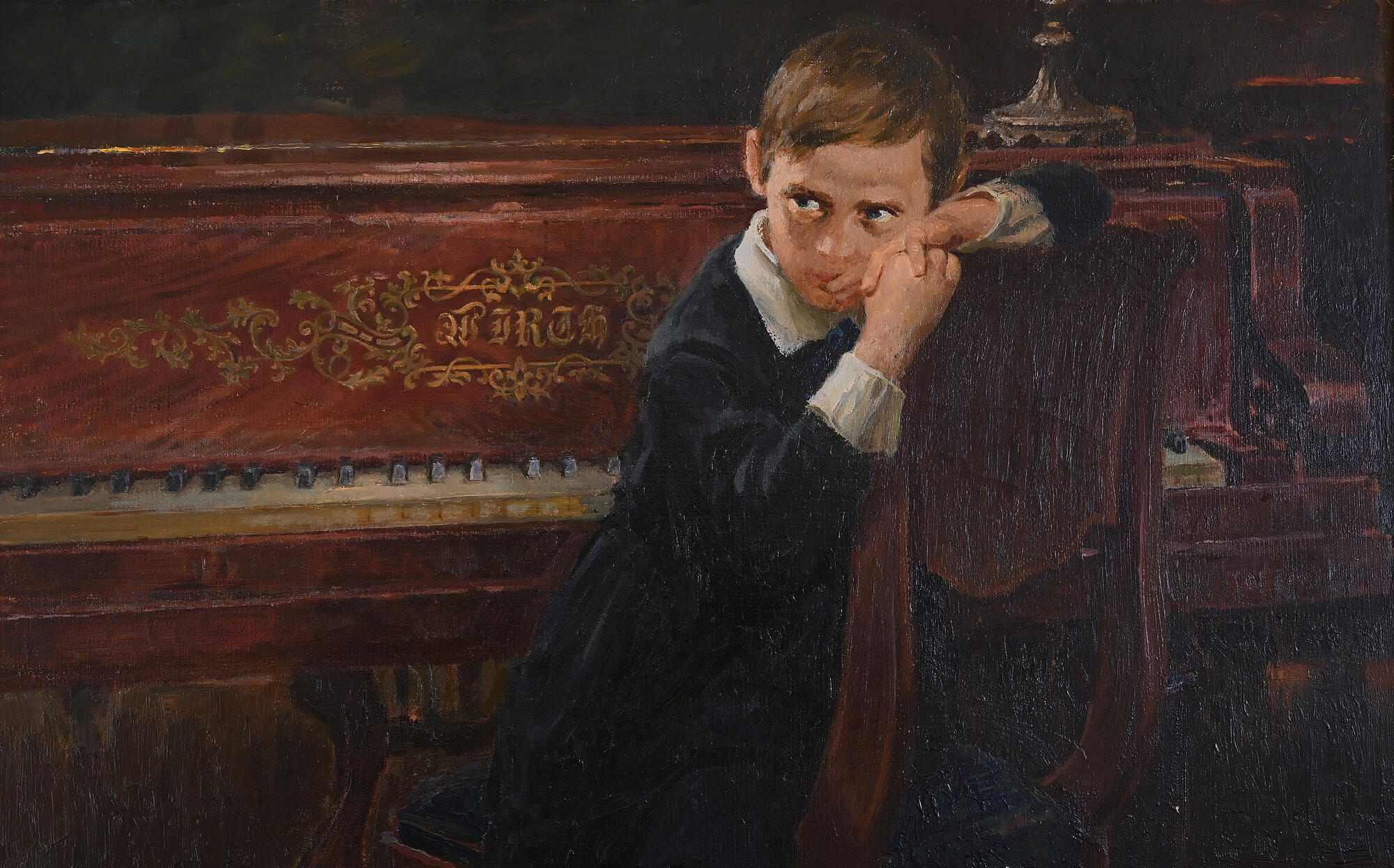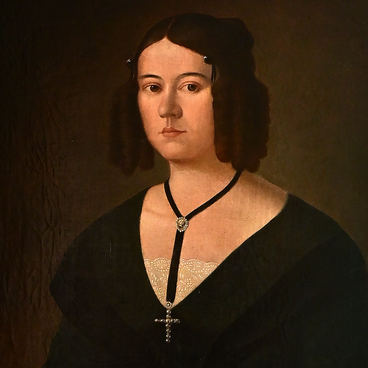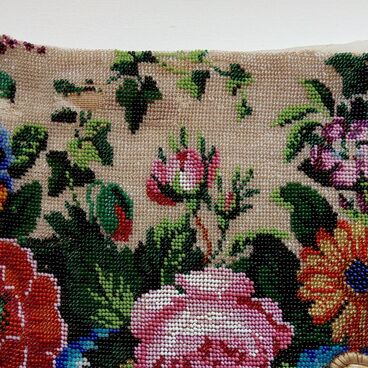The painting ‘Petya Tchaikovsky Playing the Piano’ by artist Alexey Parkhomenko was acquired by the house-museum in June 1980. A boy of seven or eight years old is depicted in the center of the canvas, he sits at the piano, putting both hands on the back of a chair. He is dressed in a dark suit, a shirt with a white collar and cuffs.
Behind the hero’s back stands a Wirth grand piano. This antique instrument is displayed in the music hall of the memorial house and is one of its most expensive exhibits.
This instrument was given to Tchaikovsky by his mother in 1852, when the family lived in St. Petersburg. The inscription on the piano is in French: “August 27, 1852, Tchaikovsky”. The instrument was kept for many years in St. Petersburg, where the Tchaikovsky’s relatives lived: the composer’s paternal uncle Pyotr Tchaikovsky and maternal aunts Ekaterina Alekseeva and Elizabeth Shobert. After Tchaikovsky’s death, his younger brother Modest was actively engaged in collecting items related to the composer’s life and work. Thus, the Wirth grand piano was brought to the Tchaikovsky House-Museum in Klin, and then to the Votkinsk House-Museum.
The author of the painting Alexey Parkhomenko was a Soviet film and theater artist, set designer, and decorator. Parkhomenko was a People’s Artist of the Russian Soviet Federative Socialist Republic, a winner of two Stalin Prizes of the first degree, and a member of the Union of Cinematographers of the USSR.
The artist graduated with honors from the Department of Decorative Arts of the Moscow State College of Fine Arts. In 1936, Parkhomenko became a decorator at the Mosfilm studio. During the years when he worked at the studio, he designed props for 40 films. Parkhomenko collaborated with famous directors, such as Mikhail Romm, Mikhail Kalatozov, Eldar Ryazanov, Aleksandr Alov and others. In the 1960s, the artist worked at the Mossovet Theater as a set designer for plays.
In addition to working for film and theatrical productions, Parkhomenko also painted in various genres and techniques: landscapes, portraits, genre sketches. He also participated in international exhibitions.
The artist passed away on July 31, 1987. He was buried in Moscow in the Kuntsevo Cemetery. His works are housed in the collections of the Cinema Museum, the Moscow Museum of Modern Art, and the Votkinsk Estate Museum of Pyotr Tchaikovsky. Most of Parkhomenko’s paintings are kept by his daughter, artist Natalia Parkhomenko.
Behind the hero’s back stands a Wirth grand piano. This antique instrument is displayed in the music hall of the memorial house and is one of its most expensive exhibits.
This instrument was given to Tchaikovsky by his mother in 1852, when the family lived in St. Petersburg. The inscription on the piano is in French: “August 27, 1852, Tchaikovsky”. The instrument was kept for many years in St. Petersburg, where the Tchaikovsky’s relatives lived: the composer’s paternal uncle Pyotr Tchaikovsky and maternal aunts Ekaterina Alekseeva and Elizabeth Shobert. After Tchaikovsky’s death, his younger brother Modest was actively engaged in collecting items related to the composer’s life and work. Thus, the Wirth grand piano was brought to the Tchaikovsky House-Museum in Klin, and then to the Votkinsk House-Museum.
The author of the painting Alexey Parkhomenko was a Soviet film and theater artist, set designer, and decorator. Parkhomenko was a People’s Artist of the Russian Soviet Federative Socialist Republic, a winner of two Stalin Prizes of the first degree, and a member of the Union of Cinematographers of the USSR.
The artist graduated with honors from the Department of Decorative Arts of the Moscow State College of Fine Arts. In 1936, Parkhomenko became a decorator at the Mosfilm studio. During the years when he worked at the studio, he designed props for 40 films. Parkhomenko collaborated with famous directors, such as Mikhail Romm, Mikhail Kalatozov, Eldar Ryazanov, Aleksandr Alov and others. In the 1960s, the artist worked at the Mossovet Theater as a set designer for plays.
In addition to working for film and theatrical productions, Parkhomenko also painted in various genres and techniques: landscapes, portraits, genre sketches. He also participated in international exhibitions.
The artist passed away on July 31, 1987. He was buried in Moscow in the Kuntsevo Cemetery. His works are housed in the collections of the Cinema Museum, the Moscow Museum of Modern Art, and the Votkinsk Estate Museum of Pyotr Tchaikovsky. Most of Parkhomenko’s paintings are kept by his daughter, artist Natalia Parkhomenko.



